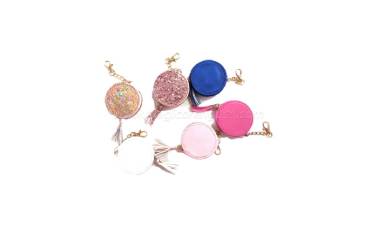Keywords: Creative Toys, Christmas Decoration, Printing, Packing, Seasonal Gift, ECO-friendly
- +86 574 8735 2935
- market@magicorangecn.com
Keywords: Creative Toys, Christmas Decoration, Printing, Packing, Seasonal Gift, ECO-friendly
Babies like to look at people - follow them with their eyes. In general, they prefer faces and bright colors. Babies can reach out and are fascinated by what their hands and feet can do, lift their heads, turn their heads toward sounds, put things in their mouths, etc.
Things they can reach, hold, suck, shake, and make sounds-rattles, large rings, squeeze toys, teething toys, soft dolls, textured balls, and vinyl books and Drawing Pen.
Things to listen to - books with nursery rhymes and poems, and recordings of lullabies and simple songs
Things to look at - hanging pictures of faces so baby can see, and non-breakable mirrors

Fruit Purse
Older babies are mobile-often they move from rolling over and sitting to sliding, bouncing, crawling, pulling themselves up, and standing. They can understand their names and other common words, identify body parts, find hidden objects, and put things in and take things out of containers.
Things they can pretend to play with - baby dolls, puppets, plastic and wooden vehicles with wheels, and water toys.
Things that can be dropped and removed-plastic bowls, large beads, balls, and nesting toys.
Things to build with-large soft blocks and wooden cubes
Things to use to exercise large muscles-large balls, push and pull toys, and low, soft things for them to crawl on
One year olds run on the road! Generally, they can walk steadily and even climb stairs. They enjoy listening to stories, can say their first words, and can play next to other children. They like to experiment, but need an adult to keep them safe.
Board books with simple illustrations or photos of real objects
Records with songs, children's songs, simple stories and pictures
Something to create with - non-toxic, washable markers, crayons and large paper
Things to pretend with toy phones, dolls and doll beds, strollers and baby carriages, dress-up accessories (scarves, Fruit Purse), puppets, stuffed animals, plastic animals, and plastic and wooden "realistic" vehicles
Things to build with - cardboard and wooden blocks.
Things used to exercise small and large muscles - puzzles, large pegboards, toys with moving parts, and large and small balls.
Toddlers are rapidly learning language and have some awareness of hazards. However, they do a lot of physical "testing": jumping from high places, climbing, dangling by their arms, rolling and playing roughly. They have good control over their hands and fingers and enjoy doing things with small objects.
Things for problem solving - wooden puzzles, blocks that snap together, sortable objects, and things with hooks.
Things for buttons, snaps and clasps
Things for pretend and construction - blocks, smaller transportation toys, construction kits, child-sized furniture, dress-up clothes, dolls with accessories, puppets, and toys for sand and water play
Things for creating - large non-toxic, washable crayons and markers, large paintbrushes and finger paints, large paper for drawing, colored construction paper, toddler-sized blunt-tipped scissors, chalkboards and large chalk, and rhythm instruments.
Picture books with more detail than younger children's books
CD and DVD players with a variety of music.
Things to use to exercise small and large muscles - large and small balls for kicking and throwing, rides, tunnels, low climbers with soft materials underneath, and banging and hammering toys
Preschoolers and kindergarteners have longer attention spans than toddlers. Usually, they talk a lot and ask a lot of questions. They like to try things and have budding physical skills. They love to play with their friends and don't like to lose! They can take turns playing - for older preschoolers and kindergarteners, it is often possible for two or more children to share a toy.
Problem-solving objects-puzzles, pieces that fit together, collections and other smaller objects that can be sorted by length, width, height, shape, color, smell, number and other characteristics-plastic bottles for collections of hats, plastic bowls and lids, keys, seashells, counting bears, small colored squares
Costume and building supplies - many blocks for building complex structures, transportation toys, building sets, child-sized furniture, dress-up clothes, dolls with accessories, puppets and simple puppet theater as well as sand and water toys
Creation stuff - small and large crayons and markers, small and large paintbrushes and finger paints, small and large drawing paper, colored construction paper, preschool size scissors, chalkboards and small and large chalk, modeling clay and playdough, modeling collage tools, tools, paste, paper and fabric scraps, and musical instruments - rhythm instruments and keyboards, xylophones, maracas and bell drums
Safe toys for young children are well made; painted with non-toxic, lead-free paint; drop-proof and easy to clean.
Motorized toys should be " UL approved". Make sure to check the label, which should indicate that the toy has been approved by Underwriters Laboratories. Also, when choosing toys for children under 3 years of age, make sure there are no small parts or pieces that could get down a child's throat and cause choking.
It is important to remember that typical wear and tear can cause a once-safe toy to become dangerous. Adults should always check toys to make sure they are in good repair. For a list of toys recalled by Toy Manufacturers, visit the Consumer Product Safety Commission website.

Copyright © Ningbo Magic Orange Arts & Crafts Co., Ltd. All Rights Reserved | Sitemap Technical Support: 